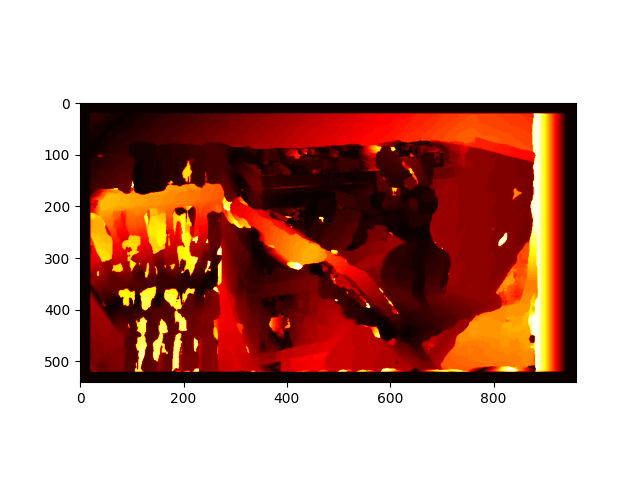Taking two images from a sequence, performing epipolar geometry on it. Then apply stereovision techniques to estimate the depth in the images.
This serves as an entry point for various 3-D depth estimation and scene reconstruction techniques.
| Keypoints Image A | Keypoints Image B |
|---|---|
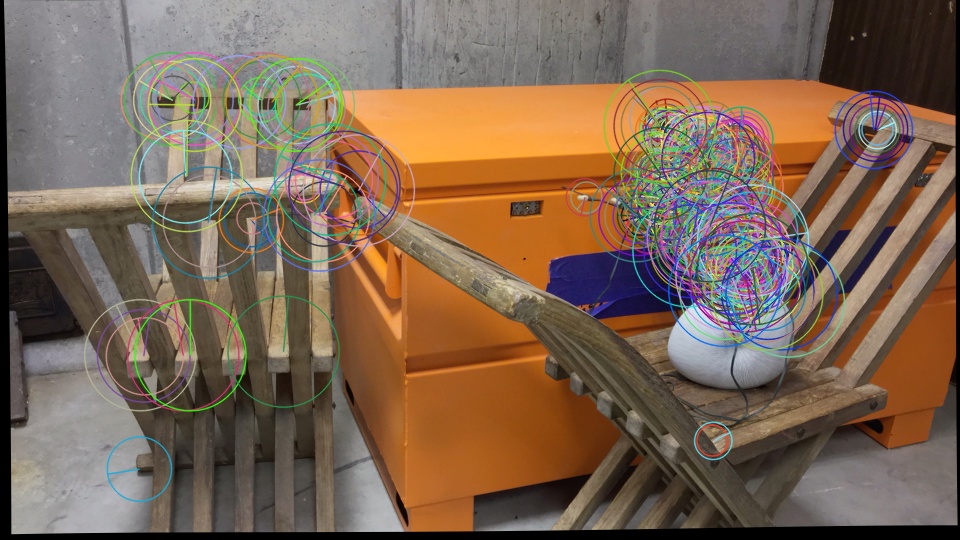 |
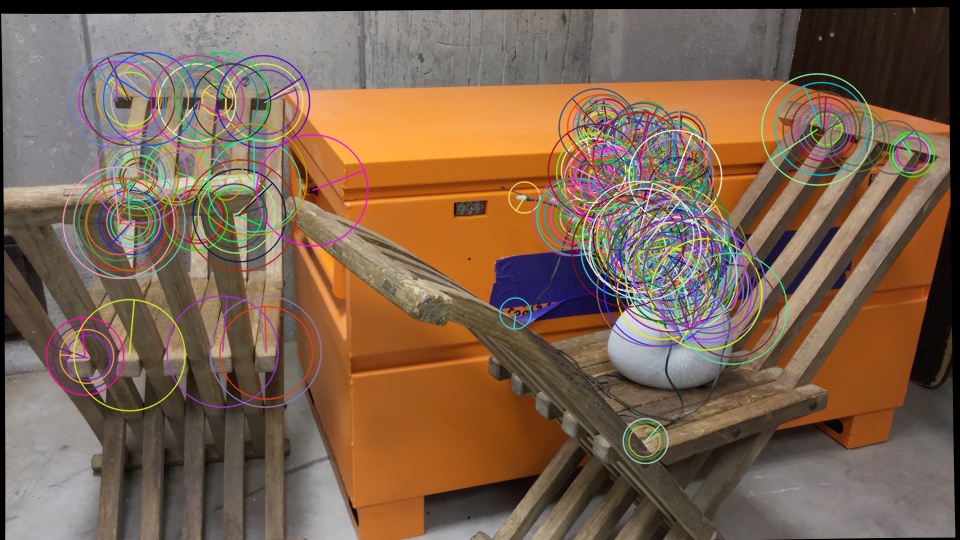 |
- Read two images separately and convert to grayscale for easier processing
- Rescale images to fit in screen
- Use ORB detector to detect keypoints in both images. Create an orb object
- Detect and compute key points and descriptors for both images
- Match features on both images. Create a Brute force matcher and use k-nearest neighbours method to match points on both images
- Now from the matched points we only choose good matches, ones which are distinct enough
- Now we need to calculate the pixel coordinates of the good matching points since the matching points are in the form of DObjects
- From the resulting coordinate points choose only the first 8 points for each image as we need only 8 points to calculate our Fundamental matrix
- Arrange these 8 points from each image into an array A and take its SVD
- The last column of the V matrix from the SVD is the needed Fundamental matrix. We extract and reshape into an 3 by 3 matrix and therefore we get the Fundamental Matrix
- Once we have the fundamental matrix we need to calculate the Essential Matrix. For that we need the intrinsic camera parameters, this is already provided to us
- The essential matrix is the matrix multiplication of the three matrices in the particular order Transpose of intrinsic matrix * Fundamental matrix * Intrinsic matrix
- Thus we obtain the Essential matrix for the images
- Now we need to decompose the Essential matrix into corresponding pairs of translation and rotation matrices. We will get four such pairs
- First we perform the SVD of Essential matrix. Define a new matrix W as follows
[0, -1, 0]
[1, 0, 0]
[0, 0, 1]
- We get the following four pairs of translation and rotation matrices
C1 = U[:, 2]
R1 = U * W * V transpose (U and V are from the SVD of essential matrix)
C2 = - U[:, 2]
R2 = U * W * V transpose
C3 = U[:, 2]
R3 = U * W transpose * V transpose
C4 = - U[:, 2]
R4 = U * W transpose * V transpose
| Keypoints Image A | Keypoints Image B |
|---|---|
 |
 |
| Epilines Image A | Epilines Image B |
|---|---|
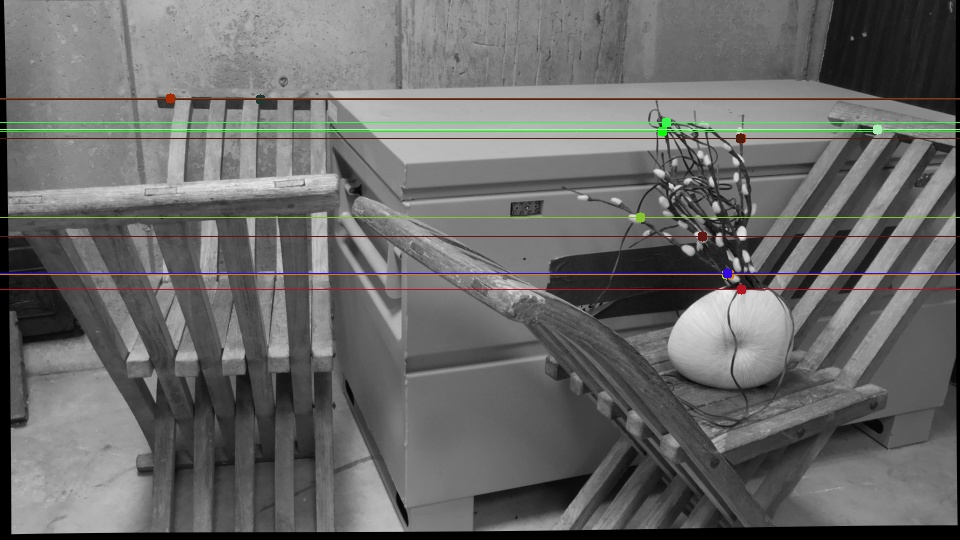 |
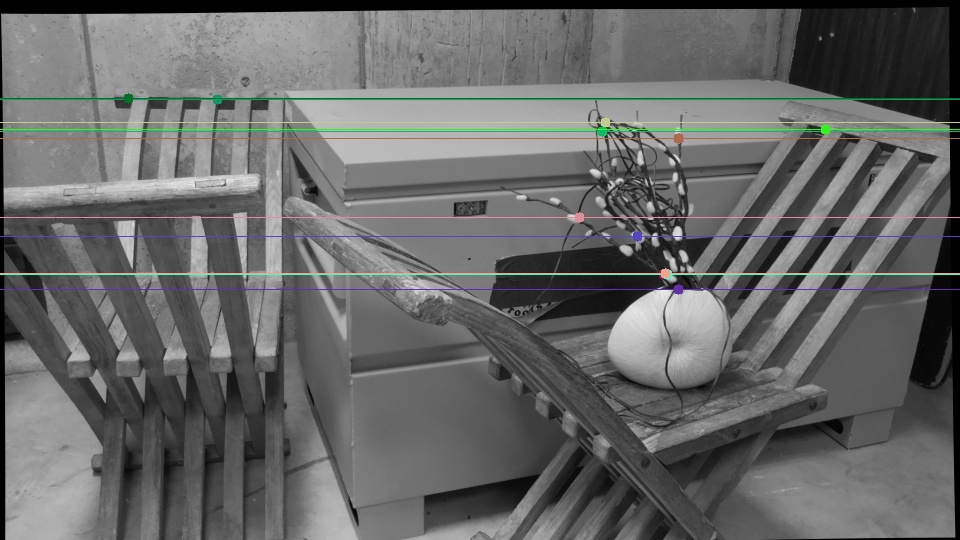 |
- Using the cv.stereoRectifyUncalibrated function to get the homography matrices for both images The homography matrices are
H1 = [[-6.79073699e-01 -2.55442303e-03 2.50387638e+01]
[ 0.00000000e+00 -7.07110000e-01 0.00000000e+00]
[ 0.00000000e+00 0.00000000e+00 -7.07110000e-01]]
H2 = [[1. 0. 0.]
[0. 1. 0.]
[0. 0. 1.]]
- Warp the perspective of both the images so that the epilines are horizontal in the images
| Rectified Image A | Rectified Image B |
|---|---|
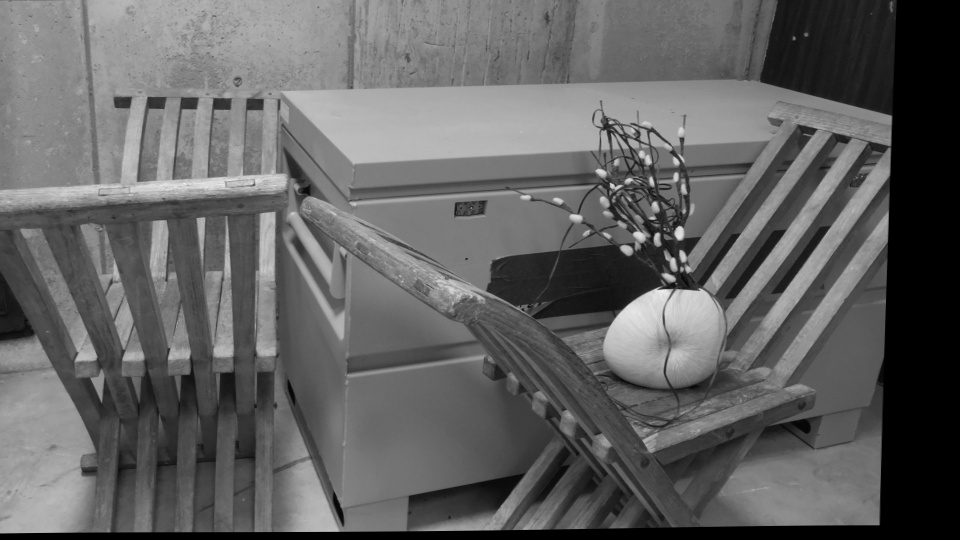 |
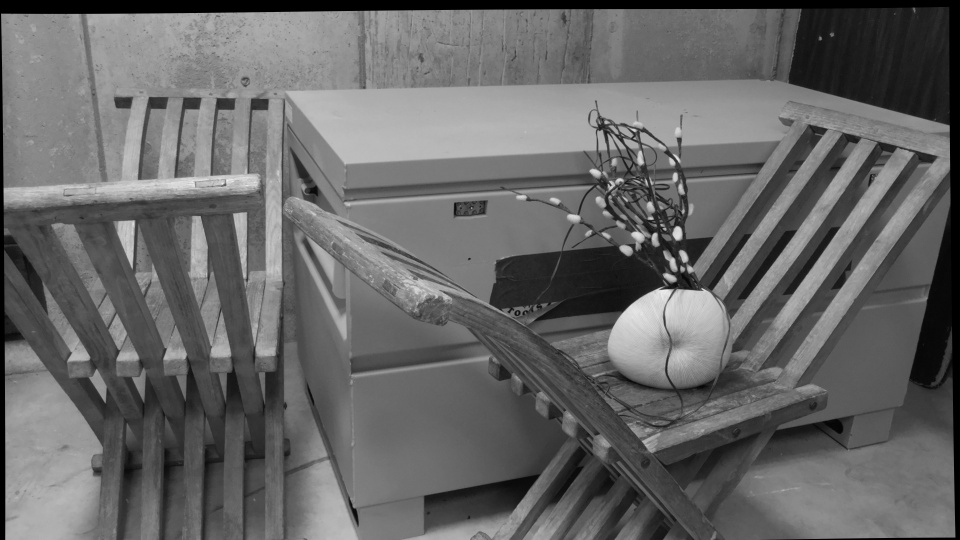 |
- Convert the images into arrays
- If shape isn’t same raise an error to handle the exception
- Create a zeros of disparity map
- Since disparity calculation takes time, tqdm is used to monitor progress
- Iterate over each pixel to calculate disparity
- Choose a small block in left image
- Compare it with a block from the right image
- Get a search range for right image
- Iterate through the range for right image
- Calculate the disparity and depth
These outputs are for just one dataset. Outputs from other datasets are available in the respective folders.
- Clone the repo to your local machine
git clone https://github.com/HemanthJoseph/Stereovison-Depth-Mapping.git
- Run the python file of choice
python curule.py
- Python 3.9.12
- OpenCV '4.7.0'
- Numpy '1.24.2'
- As and when image outputs show on the screen, press any key to go to the next image output
- The calculation for disparity takes anywhere between 3 - 6 minutes depending upon the computer specifications, please wait until then for the computation
I faced an issue where my epipole was falling inside my image and I wasn’t getting the results I had expected. After going through eash line I found out the problem was with the bruteforce matcher method before getting the matching points. I was using the
cv.NORM_HAMMING for matching which gave rise this problem.
bf = cv.BFMatcher_create(cv.NORM_HAMMING)
I solved this by using a simple brute force matcher.
bf = cv.BFMatcher()
